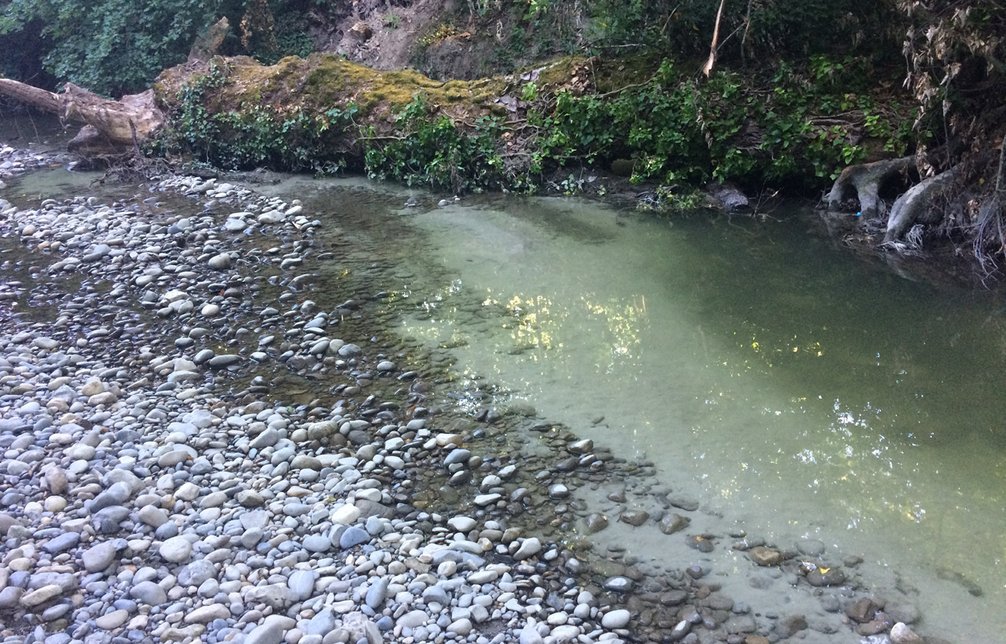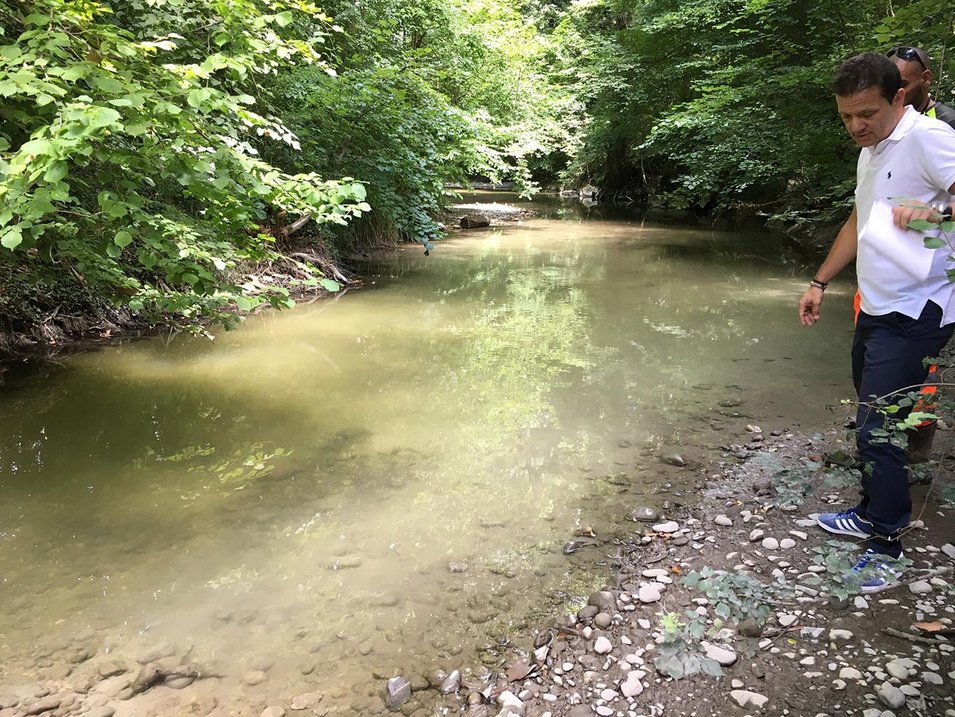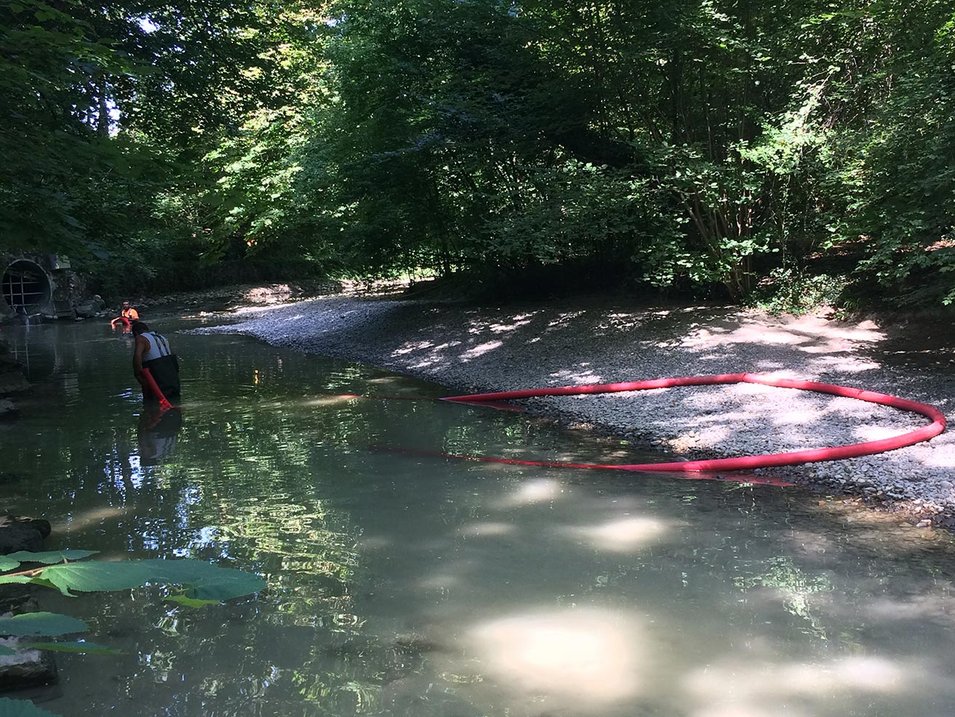Environmental mystery on the construction site

It wasn’t the butler that did it – it was a type of clay called bentonite. This is made up of various minerals and has a special characteristic: when mixed with water, bentonite forms a liquid can solidify into a pressure-tight mass.
A bentonite-water mixture is used, for example, as a supporting slurry during the construction of diaphragm walls. A digger can excavate a narrow but deep trench without the sides collapsing if the trench is filled with this slurry. The fully dug trench can then be permanently stabilised with concrete.
This is the technique used in 2017 by Implenia workers digging deep foundations on the Tourbillon building site. The men were working in Plan-Les-Ouates on the outskirts of Geneva on a former agricultural area that over the years had been developed in to an industrial zone.
Everything went fine to start with, but on 4 July 2017, the workers noticed that something was wrong: the support slurry kept disappearing. After a while, the workers stopped the machines and pumped out the bentonite/water mixture. To their astonishment, three metres down they discovered a broken PVC pipe that was not shown on any of their plans.
Next day, while the site workers were still wondering where the plastic pipe went to, Benoît Klein got a phone call. The cantonal water authority informed Implenia’s Sustainability Project Manager for French-speaking Switzerland that the water in the Aïre – a stream in Plan-Les-Ouates – was looking cloudy.
Suddenly the pieces fell into place. The green pipe had obviously been used to take water off the former arable land and into the drains under the nearby road, which in turn fed into the stream 2.5 kilometres away. So that’s where 20,000 litres of bentonite slurry had gone to.
Without delay, Klein arranged a meeting with the construction management team, council officers and the project’s environmental officer to assess the damage. Fortunately, the slurry was non-toxic. Nevertheless, Implenia immediately sent two workers to start pumping bentonite deposits out from the river bed. After four days, the stream was back to normal.
“History shows what can happen on a construction site if you don’t act fast,” says Benoît Klein. Implenia did well to repair the damage quickly. Ideally, Implenia should have informed the authorities straight away that something was amiss on the site. “But we’ve learned our lesson,” says Klein. “Next time there’s an incident we’ll get the authorities involved immediately – even if we don’t yet know exactly what has happened.”



